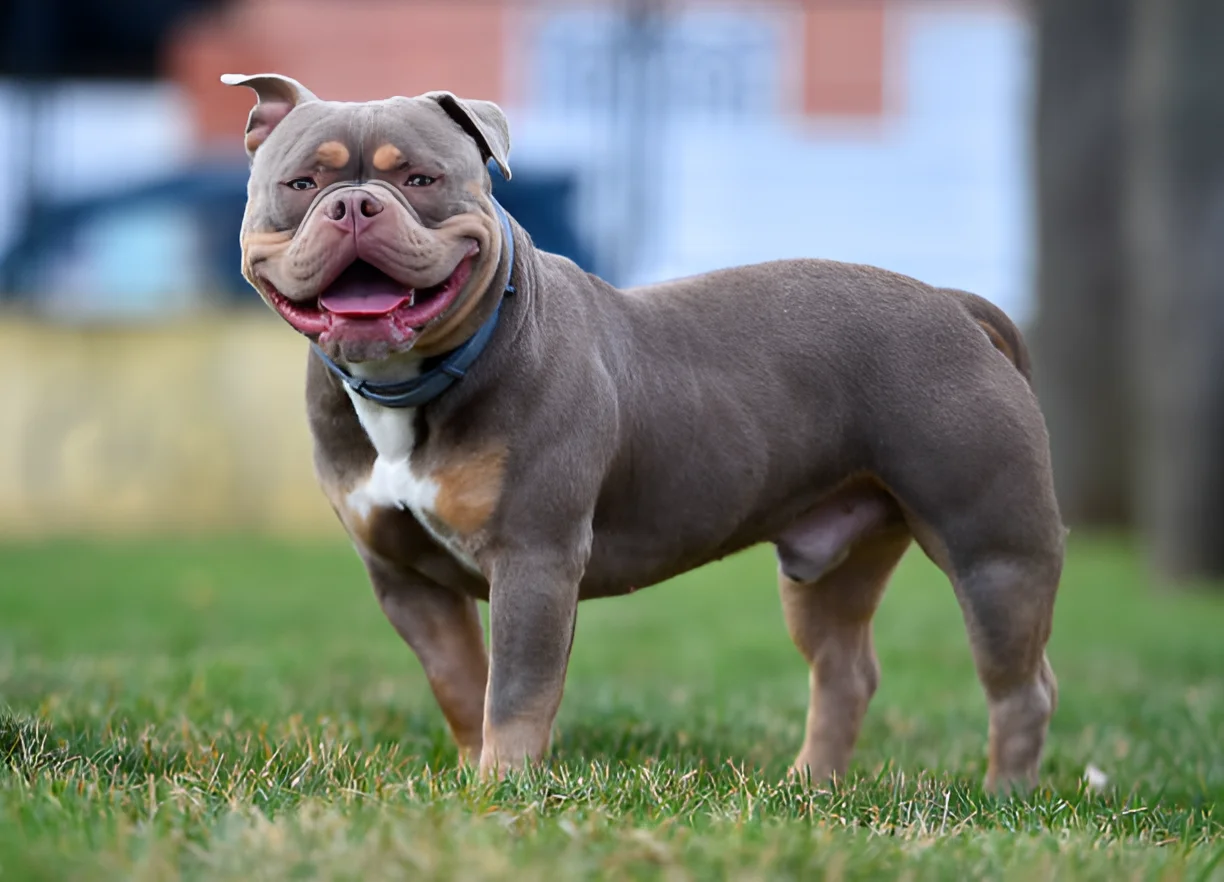Neither American Bullies nor Pitbulls are inherently more aggressive; their behavior largely depends on their upbringing, training, and environment. Understanding the differences between these breeds and the factors influencing their behavior can help dispel myths and promote responsible ownership.
American Bullies and Pitbulls are often misunderstood breeds, frequently labeled as aggressive due to their history and physical appearance. However, aggression in dogs is a complex trait influenced by various factors, including genetics, training, and environment. This comprehensive guide explores the differences between American Bullies and Pitbulls, their temperaments, and how to manage and prevent aggressive behavior.
Understanding the Breeds
American Bully
The American Bully is a relatively new breed, developed in the United States in the late 20th century.
- Origins: The breed was created by crossing the American Pit Bull Terrier with other breeds such as the American Bulldog, English Bulldog, and Old English Bulldog.
- Appearance: American Bullies are known for their muscular build, broad heads, and short, glossy coats. They come in various sizes, including Pocket, Standard, Classic, and XL.
- Temperament: Despite their intimidating appearance, American Bullies are known for their friendly and affectionate nature. They were bred to be companion animals and are generally good with children and other pets.
Pitbull
The term “Pitbull” refers to a group of breeds, including the American Pit Bull Terrier, American Staffordshire Terrier, Staffordshire Bull Terrier, and sometimes the American Bully.
- Origins: Pitbulls were originally bred in England for bull-baiting and later for dog fighting. When these activities were banned, they were brought to America and used as farm dogs and companions.
- Appearance: Pitbulls are medium-sized dogs with a muscular build, broad heads, and short coats. They are known for their agility and strength.
- Temperament: Pitbulls are loyal, energetic, and eager to please. They are often misunderstood due to their history, but with proper training and socialization, they can be loving family pets.
Comparing Aggression in American Bullies and Pitbulls
Historical Context
Understanding the historical context of these breeds can provide insights into their behavior.
- American Bully: Bred primarily as companion animals, American Bullies were not intended for fighting or aggressive tasks. Their breeding focused on creating a friendly and stable temperament.
- Pitbull: Bred for bull-baiting and dog fighting, Pitbulls have a history of being used in aggressive activities. However, many modern Pitbulls are far removed from these origins and can be gentle and affectionate pets.
Temperament and Behavior
Both breeds have distinct temperamental traits that influence their behavior.
- American Bully: Known for their laid-back and tolerant nature, American Bullies are generally less likely to exhibit aggressive behavior. They are social dogs that thrive on human interaction and are often described as “nanny dogs” due to their gentle nature with children.
- Pitbull: Pitbulls are energetic and protective, which can sometimes be mistaken for aggression. They are highly trainable and respond well to positive reinforcement. With proper socialization, they can be friendly and well-behaved.
Factors Influencing Aggression
Genetics
Genetics play a role in a dog’s temperament, but they are not the sole determinant of behavior.
- Inherited Traits: Some dogs may inherit traits that make them more prone to certain behaviors, but these can be managed with proper training and socialization.
- Selective Breeding: Responsible breeders focus on breeding dogs with stable temperaments, reducing the likelihood of aggressive traits being passed down.
Training and Socialization
Training and socialization are crucial in shaping a dog’s behavior.
- Early Socialization: Exposing puppies to various people, animals, and environments helps them develop into well-adjusted adults.
- Positive Reinforcement: Using positive reinforcement techniques, such as treats and praise, encourages good behavior and strengthens the bond between the dog and owner.
- Consistency: Consistent training and clear boundaries help prevent behavioral issues and ensure the dog understands what is expected of them.
Environment
The environment in which a dog is raised can significantly impact their behavior.
- Stable Home Environment: A stable and loving home environment promotes a sense of security and reduces anxiety, which can lead to aggressive behavior.
- Exercise and Mental Stimulation: Providing regular exercise and mental stimulation helps prevent boredom and frustration, which can contribute to aggression.
- Avoiding Negative Reinforcement: Avoiding harsh punishment and negative reinforcement prevents fear-based aggression and builds trust between the dog and owner.
Managing and Preventing Aggression
Recognizing Signs of Aggression
Recognizing the early signs of aggression can help prevent escalation.
- Body Language: Signs of aggression include stiff posture, raised hackles, growling, and baring teeth.
- Behavioral Changes: Sudden changes in behavior, such as increased barking or snapping, can indicate underlying issues.
Addressing Aggressive Behavior
Addressing aggressive behavior promptly is essential for the safety of both the dog and others.
- Professional Training: Seeking the help of a professional dog trainer or behaviorist can provide tailored strategies to manage and reduce aggression.
- Behavior Modification: Implementing behavior modification techniques, such as desensitization and counter-conditioning, can help change the dog’s response to triggers.
- Medical Evaluation: In some cases, aggression may be linked to medical issues. A thorough veterinary evaluation can rule out underlying health problems.
Conclusion
In conclusion, neither American Bullies nor Pitbulls are inherently more aggressive; their behavior largely depends on their upbringing, training, and environment. Understanding the differences between these breeds and the factors influencing their behavior can help dispel myths and promote responsible ownership. With proper care, training, and socialization, both breeds can be loving and well-behaved companions.
The photo featured below the post headline is Credit: alberto clemares expósito/istockphoto
I hope you find this post helpful and informative. If Yes’ feel free to share it with your friends!
Frequently Asked Questions
Are American Bullies more aggressive than Pitbulls?
No, American Bullies are generally known for their friendly and laid-back nature, while Pitbulls can be protective but are not inherently more aggressive.
What factors influence a dog’s aggression?
Factors include genetics, training, socialization, and the environment in which the dog is raised.
How can I prevent aggression in my dog?
Early socialization, positive reinforcement training, providing a stable home environment, and regular exercise and mental stimulation can help prevent aggression.
What should I do if my dog shows signs of aggression?
Seek the help of a professional dog trainer or behaviorist, implement behavior modification techniques, and consult a veterinarian to rule out medical issues.
Are Pitbulls good family pets?
Yes, with proper training and socialization, Pitbulls can be loyal, affectionate, and well-behaved family pets.

